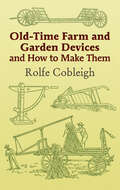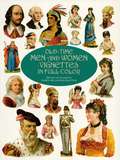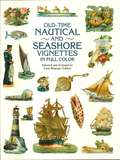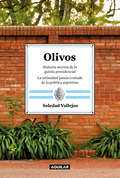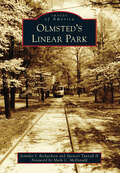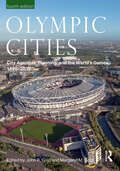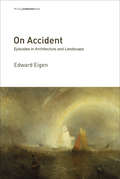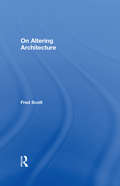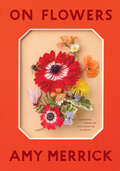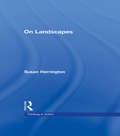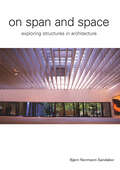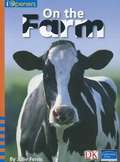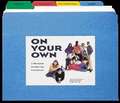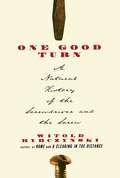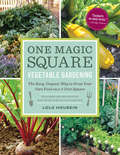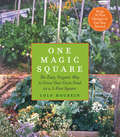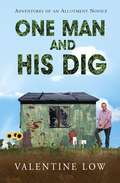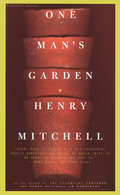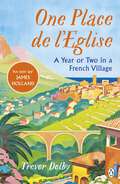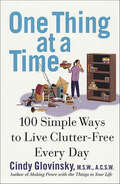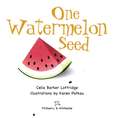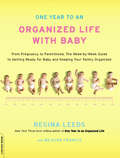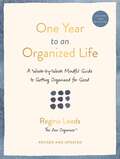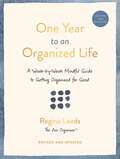- Table View
- List View
Old-Time Farm and Garden Devices and How to Make Them
by Rolfe CobleighA splendid bit of rural Americana, Cobleigh's book shows how anyone with a little time and money can add a touch of authentic charm to their farm, house, or garden. First published nearly a century ago, this practical guide features dozens of projects, accompanied by some 200 illustrations. A simply written text not only tells how to mount an anvil, make a cheese press, and build hog houses, but also provides handy advice on splitting wood, testing seed corn, tying practical knots, sharpening scissors, and papering a room.From building a rose trellis to creating a bicycle-powered washing machine, readers will delight in this book’s abundance of enjoyable and useful projects. It’s perfect for novice craftworkers and die-hard fans of Yankee ingenuity.
Old-Time Men and Women Vignettes in Full Color
by Carol Belanger GraftonIn this collection of rare, turn-of-the-century images, you'll find many different kinds of people from a variety of historical periods. Among its 304 images, this book contains pictures of men and women both in realistic everyday dress, and resplendent in fine jewels and clothing. Other illustrations portray amusing caricatures of people with outlandish and comical distortions. In addition to several portraits of well-known celebrities such as Shakespeare, Lincoln, and Michelangelo, this book also includes vignettes depicting a knight in full body armor and ladies riding sidesaddle on horses, as well as many images of people playing musical instruments. Collecting these chromolithographs was a popular hobby in the Victorian era, and the vivid colors in these antique cuts continue to charm and inspire artists and designers today.
Old-Time Nautical and Seashore Vignettes in Full Color (Dover Pictorial Archive)
by Carol Belanger GraftonThis handsome collection of full-color vignettes, painstakingly culled from rare 19th- and early-20th-century chromolithographs, is the perfect resource for countless arts and crafts projects that require a maritime touch. Featured are 323 exquisite full-color illustrations of sailors, ships, rowboats, lighthouses, swimmers, fish, shells, and other nautical motifs in a great variety of sizes, shapes, and styles.Graphic artists, designers, découpeurs, and collagists will find these superb copyright-free illustrations ideal for scores of projects with a maritime theme. Printed one side only on acid-free paper (with acid-free-inks), these nostalgic designs are also ideal for use in scrapbooks, memory albums, and other treasured collections.
Olivos: Historia secreta de la quinta presidencial. La intimidad jamás contada de la política argentina
by Soledad VallejosLa Residencia Presidencial de Olivos, desde su donación hasta la actualidad, ha sido el espacio íntimo del poder en la Argentina. El libro de Soledad Vallejos retrata usos y costumbres de los distintos presidentes y sus familias, de trabajadores, de ocupantes ocasionales y visitantes, a partir de una rigurosa y amplia investigación, y con una prosa ágil y atrapante. La Quinta de Olivos es un lugar del que todos hablan pero pocos conocen. Allí Perón tenía un tigre, y Aramburu, perros que andaban por la casa, cerca de la cual hoy yace, enterrada bajo un árbol, una bóxer llegada de la Patagonia con los Kirchner. Durante los cacerolazos de diciembre de 2001, cientos de desconocidos treparon al muro y amagaron con invadir el predio mientras De la Rúa dormía. En el microcine, Alfonsín vio el partido que consagró a la Argentina en el mundial de México 86, y anunció un cambio de gabinete que haría historia. Cuando la Triple A asolaba las calles, Isabelita exhibió en una cripta los restos de Perón y Evita. La Residencia Presidencial también fue escenario del casamiento elegante de la hija de Illia, la vida familiar de Videla y las leyendas tejidas al calor del menemismo. Pero, ante todo, de la cotidianeidad del poder político, que custodia con discreción lo que pasa tras el muro rojo. Nadie había presentado hasta ahora una investigación similar. Con entrevistas, archivos históricos y recorridos por el lugar, Soledad Vallejos descubre en Olivos las historias secretas de los presidentes que habitaron en la Residencia y de los empleados que velan por ella, para relatar la vida íntima de la política argentina.
Olmsted's Linear Park (Images of America)
by Jennifer J. Richardson Spencer Tunnell IIIn 1892, entrepreneur Joel Hurt invited Frederick Law Olmsted Sr. to Atlanta to design "an ideal suburb." Olmsted and his firm began designs and were in regular communication with Hurt. Members of the firm came to Atlanta during design and construction. Even with changing ownership, Olmsted's vision and plans were followed. The design became the last residential suburb designed by Olmsted--the only one in the Deep South. The centerpiece of the neighborhood is its segmented park. After reaching a peak of beauty in the 1930s, the park and neighborhood declined, and the park was threatened by an ill-conceived expressway. Olmsted and Hurt's dream of the linear park prevailed, and the park has been renovated to how it looked in its heyday. This is the story of how a handful of people preserved, protected, and enhanced the linear park so that it can be enjoyed for generations to come.
Olympic Cities: City Agendas, Planning, and the World’s Games, 1896 – 2032 (ISSN)
by John R. Gold Margaret M. GoldThe first edition of Olympic Cities, published in 2007, provided a pioneering overview of the changing relationship between cities and the modern Olympic Games. This substantially revised and much enlarged fourth edition builds on the success of its predecessors. The first of its three parts provides overviews of the urban legacy of the four component Olympic festivals: the Summer Games; Winter Games; Cultural Olympiads; and the Paralympics. The second part comprises systematic surveys of six key aspects of activity involved in staging the Olympics and Paralympics: finance; sustainability; the creation of Olympic Villages; security; urban regeneration; and tourism. The final part consists of ten chronologically arranged portraits of host cities from 1960 to 2032, with complete coverage of the Summer Games of the twenty-first century.As controversy over the growing size and expense of the Olympics, with associated issues of democratic accountability and legacy, continues unabated, this book’s incisive and timely assessment of the Games’ development and the complex agendas that host cities attach to the event will be essential reading for a wide audience. This will include not just urban and sports historians, urban geographers, event managers, and city planners, but also anyone with an interest in the staging of mega-events and concerned with building a better understanding of the relationship between cities, sport, and culture.
On Accident: Episodes in Architecture and Landscape (Writing Architecture)
by Edward EigenEngaging essays that roam across uncertain territory, in search of sunken forests, unclassifiable islands, inflammable skies, plagiarized tabernacles, and other phenomena missing from architectural history.This collection by “architectural history's most beguiling essayist” (as Reinhold Martin calls the author in the book's foreword) illuminates the unfamiliar, the arcane, the obscure—phenomena largely missing from architectural and landscape history. These essays by Edward Eigen do not walk in a straight line, but roam across uncertain territory, discovering sunken forests, unclassifiable islands, inflammable skies, unvisited shores, plagiarized tabernacles. Taken together, these texts offer a group portrait of how certain things fall apart.We read about the statistical investigation of lightning strikes in France by the author-astronomer Camille Flammarion, which leads Eigen to reflect also on Foucault, Hamlet, and the role of the anecdote in architectural history. We learn about, among other things, Olmsted's role in transforming landscape gardening into landscape architecture; the connections among hedging, hedge funds, the High Line, and GPS bandwidth; timber-frame roofs and (spider) web-based learning; the archives of the Houses of Parliament through flood and fire; and what the 1898 disappearance and reappearance of the Trenton, New Jersey architect William W. Slack might tell us about the conflict between “the migratory impulse” and “love of home.” Eigen compares his essays to the “gathering up of seeds that fell by the wayside.” The seedlings that result create in the reader's imagination a dazzling display of the particular, the contingent, the incidental, and the singular, all in search of a narrative.
On Altering Architecture
by Fred ScottBringing together interior design and architectural theory, this exciting text looks at the common practices of building alteration, reconsidering established ideas and methods, to initiate the creation of a theory of the interior or interventional design. Fred Scott examines in-depth case studies of interventional design from architectural history across the world – examples discussed are taken from the States, Europe and Japan. Scott expands and builds on the ideas of Viollet-le-Duc, structuralism and other thoughts to layout criteria for an art of intervention and change. The book draws on the philosophy of conservation, preservation and restoration, as well as exploring related social and political issues. For those in professions of architecture and interiors, town planners, and students in architecture and art schools, On Altering Architecture forms a body of thought that can be aligned and compared with architectural theory.
On Flowers: Lessons from an Accidental Florist
by Amy MerrickA singular, personal celebration of the beauty and possibilities of nature Amy Merrick is a rare and special kind of artist who uses flowers to help us see the familiar in a completely new way. Her gift is to revel in the unexpected—like a sunny spring arrangement housed in a paper coffee cup—and to overturn preconceptions, whether she’s transforming a bouquet of supermarket carnations into a breathtaking centerpiece or elevating wild and weedy blooms foraged from city sidewalks. She uses the beauty that is waiting to be discovered all around us—in leaves, branches, seedpods, a fallen blossom—to tell a story of time and place. Merrick begins On Flowers with a primer containing all her hard-won secrets on the art of flower arranging, from selecting materials to mastering pleasing proportions. Then she brings readers along on her journey, with observations on flowers in New York City and at her family’s summer home in rural New Hampshire, working on a flower farm off the coast of Washington State, and studying ikebana in a jewel-box flower shop in Kyoto. We learn how to send flowers like a florist, and how to arrange them like a farm girl. We discover the poignancy in humble wildflowers, and also celebrate the luxury of fragrant blousy blooms. Collected here is an anthology of floral inspiration, a love letter to nature by an exceptional, accidental florist.
On Landscapes (Thinking in Action #29)
by Susan HerringtonThere is no escaping landscape: it's everywhere and part of everyone's life. Landscapes have received much less attention in aesthetics than those arts we can choose to ignore, such as painting or music – but they can tell us a lot about the ethical and aesthetic values of the societies that produce them. Drawing on examples from a wide range of landscapes from around the world and throughout history, Susan Herrington considers the ways landscapes can affect our emotions, our imaginations, and our understanding of the passage of time. On Landscapes reveals the design work involved in even the most naturalistic of landscapes, and the ways in which contemporary landscapes are turning the challenges of the industrial past into opportunities for the future. Inviting us to thoughtfully see and experience the landscapes that we encounter in our daily lives, On Landscapes demonstrates that art is all around us.
On Span and Space: Exploring Structures in Architecture
by Bjorn N. SandakerIn this richly illustrated book with many practical examples, Bjorn Sandaker provides readers with a better understanding of the relationship between technology and architecture. As an experienced teacher and writer, Sandaker offers a well-founded aesthetic theory to support the understanding and evaluation of a structure's form and design, examining concepts and viewpoints from both the professions of engineering and architecture. Comprehensively covering structure and aesthetics, this book is ideal for students, professionals and academics in the areas of architecture and building.
On The Farm
by Julie FerrisAll over the world, farmers are hard at work. Some farmers grow and harvest grain, vegetables, fruit, and flower crops. Other farmers raise animals such as sheep, goats, and cows for wool, meat, and milk. Farmers in different regions of the world often produce different things. Meet three farmers with very different farms. Don Josè raises sheep, Mary runs a dairy farm, and Ben grows vegetables. Find out what happens on a busy day on their farms.
On Your Own Instructional Booklet: A Personal Budgeting Simulation
by Mary Queen DonnellyThis simulation depicts a recent high school graduate finding out what it means to be On Your Own financially. The text presents the process of opening a checking account, renting an apartment, applying for credit, looking for a job, buying a car, and paying taxes. Students complete parallel activities for themselves as they work through the text, completing budgets and creating filing systems for personal financial information. As the graduate learns what it means to be on your own, so will your students.
One Good Turn: A Natural History of the Screwdriver and the Screw
by Witold RybczynskiThe Best Tool of the Millennium The seeds of Rybczynski's elegant and illuminating new book were sown by The New York Times, whose editors asked him to write an essay identifying "the best tool of the millennium." The award-winning author of Home, A Clearing in the Distance, and Now I Sit Me Down, Rybczynski once built a house using only hand tools. His intimate knowledge of the toolbox -- both its contents and its history -- serves him beautifully on his quest. One Good Turn is a story starring Archimedes, who invented the water screw and introduced the helix, and Leonardo, who sketched a machine for carving wood screws. It is a story of mechanical discovery and genius that takes readers from ancient Greece to car design in the age of American industry. Rybczynski writes an ode to the screw, without which there would be no telescope, no microscope -- in short, no enlightenment science. One of our finest cultural and architectural historians, Rybczynski renders a graceful, original, and engaging portrait of the tool that changed the course of civilization.
One Little Lot: The 1-2-3s of an Urban Garden
by Diane C. MullenIn a bustling, urban neighborhood, count the ways one little lot becomes a beautiful community vegetable garden.Count all the ways (one to ten) an urban community unites to clean up an abandoned lot. From building planter boxes to pulling weeds to planting seeds, everyone works together to transform the lot into a bountiful vegetable garden. As the garden grows, strangers become friends, eventually sharing in a special feast with the harvest they grew.
One Magic Square Vegetable Gardening: The Easy, Organic Way to Grow Your Own Food on a 3-Foot Square
by Lolo HoubeinAll it takes to grow your own organic vegetables, fruits, and herbs is One Magic Square Lolo Houbein has 40 years’ worth of gardening wisdom to share—on how to coax an abundance of organic food from a plot that is just 3 feet square!Sustainable, cost-effective, and creative techniques: how to compost, save water, troubleshoot weeds and pests, create a plant-friendly microclimate, and moreOver 40 themed plot designs, from antioxidant-rich and anti-cancer plots to salad, pizza, pasta, and stir-fry plotsEncyclopedic information about every crop in every plotTips on drying, freezing, pickling, and other ways to get more value and enjoyment from your homegrown produceAnd her irresistible gardening philosophy (“If herbs wanted to be used frugally, they would also grow frugally. But they don’t!”) Ever encouraging, often charming, and always practical, this expanded second edition of One Magic Square Vegetable Gardening will help first-time gardeners get started—and help veteran gardeners get results—on a small, easy-to-maintain plot. No actual magic is required!
One Magic Square: The Easy, Organic Way to Grow Your Own Food on a 3-Foot Square
by Lolo HoubeinA Hands-On Guide to Growing Organic Vegetables, Fruits and Herbs—Starting with Just One Square Yard!Lolo Houbein has been growing food for more than 30 years—and now, drawing on her wide learning and hard-earned experience, she offers a wealth of information on how to turn small plots of land into sources of nourishing, inexpensive, organic food. Amateur gardeners wondering how to get started and veteran gardeners looking for new ideas will be inspired by Houbein’s practical, often charming, and always optimistic advice. One Magic Square includes:Earth-friendly tips, tricks, and solutions for establishing and maintaining an organic gardenIllustrated, annotated plans for 30 plots with different themes—including perennials and “pick-and-come-again” plants, anti-cancer and anti-oxidant-rich vegetables, and salad, pizza, pasta, and stir-fry ingredientsComprehensive information about every plant in every plotColor photographs of the author’s own garden—plus helpful illustrationsHoubein family recipes for making the most of your bounty—including salad dressings, fruit and vegetable juices, stir-fries, and more.
One Man and His Dig
by Valentine LowA funny and original look at the various crops and characters the author encountered during his years tending a west London allotment.
One Man's Garden
by Henry MitchellIn the sequel to The Essential Earthman, the Washington Post columnist offers a harvest of sharp observations and humorous adventures gathered during a year in his garden, along with much down-to-earth advice on horticulture.
One Place de l’Eglise: A Year in Provence for the 21st century
by Trevor DolbyEscape to Languedoc in this poignant and transportative true account of life in a beautifully restored house in the south of France'Wonderful, exquisitely written, laugh-out-loud funny, profoundly moving. An utter joy and a treat to read from first to last' JAMES HOLLAND'Dolby writes with genuine emotion. He writes beautifully about life in a French village' DAILY MAIL___________An Englishman's home is his castle. But what if it's French?One Place de L'Eglise is a thousand-year-old Languedoc ruin. Leaky, crumbling, lacking basic amenities, it is ignored by the local villagers. But for Londoners Trevor and Kaz it is love at first sight. Over the years they turn the house into a home, navigating floods and freezing winters. Here, these two English find their place - their bar, their baker, their builder (ignore him at your peril).And gradually they learn slower joys - scents of thyme and lavender, warm sun on stone, nights hung with stars, silence in the hills, the secrets of fig jam.One Place de L'Eglise is a love letter - to a house, a village, a country - from an outsider who discovers you can never be a stranger when you're made to feel so at home.___________'Irresistible, a timeless story' MICHAEL PALIN 'Elegant, captivating, and sprinkled with self-deprecating humour. Dolby is a writer of abundant talent' PETER KERR, author of Snowball Oranges
One Thing at a Time: 100 Simple Ways to Live Clutter-Free Every Day
by Cindy GlovinskySimple, effective ways to put things in their place from the therapist, professional organizer, and author of Making Peace with the Things in Your Life.Those piles of papers, clothes, and other things you thought you’d successfully de-cluttered have returned, and this time they brought friends. What’s the use of trying to fight the clutter? Is there a better way?This powerful and useful guide delivers solutions that work, no matter how overwhelmed you feel. The answer isn’t an elaborate new system, or a solemn vow to start tomorrow. Instead, psychotherapist and organizer Cindy Glovinsky shares 100 simple strategies for tackling the problem the way it grows—one thing at a time. Here’s a sampling of the tips explained in the book:Declare a fix-it dayPurge deep storage areas firstLabel it so you can read itGet a great letter openerPractice toy population planningLeave it neater than you found itWritten in short takes and with a supportive tone, this is an essential, refreshing book that helps turn a hopeless struggle into a manageable part of life, one thing at a time.Praise for Making Peace with the Things in Your Life“Glovinsky is a compassionate, talented organizer who understands the root causes of people’s clutter woes. This is a really helpful book.” —Judith Kolberg, author of Conquering Chronic Disorganization and coauthor of ADD-Friendly Ways to Organize Your Life“Glovinsky asks readers to examine the underlying psychological issues that they have with things . . . She takes Julie Morgenstern’s Organizing from the Inside Out to the next level.” —Library Journal
One Watermelon Seed
by Celia Barker LottridgeIn this deceptively simple counting book, Max and Josephine tend their garden while readers follow along, counting from one to ten as the garden is planted. Then readers can count in groups of tens as the garden is harvested, while they search through the pictures for the many small animals that are hiding throughout. A concise and clever text introduces color and rhythm, and the illustrations are bright and engaging, making this a perfect counting book for children aged four to seven.
One Year to an Organized Life with Baby: From Pregnancy to Parenthood, the Week-by-Week Guide to Getting Ready for Baby and Keeping Your Fami
by Meagan Francis Regina LeedsFrom the "New York Times"?bestselling author of "One Year to an Organized Life," a month-by-month guide to organizing your life during pregnancy and after your babyOCOs arrival"
One Year to an Organized Life: A Week-by-Week Mindful Guide to Getting Organized for Good
by Regina LeedsA comprehensive, week-by-week bible to completely streamline all aspects of your life—now revised & updated for a global pandemic world of working from home and learning to de-stress while you de-clutter. Who would you be if you felt at peace and had more time and money? An organized life enables you to have more freedom, less aggravation, better health, and to get more done. Regina Leeds has helped even the messiest turn their lives around. One Year to an Organized Life is a unique week-by-week approach that you can begin at any time of year. Regina helps you break down tasks and build routines over time so that life becomes simple, not overwhelming. Whether you're living in chaos or just looking for new ways to simplify, this essential book will help you get the whole household organized-and stay that way. Covid has shaken humanity to the core and forced us to slow down and reimagine the way we use our living spaces. In a flash, the space we knew simply as home was suddenly a classroom, our office and the gym. And, at a time when stress and anxiety is at an all-time high, it no longer seems odd to meditate. It feels life-saving. If life is to be re-imagined, shouldn&’t we also do that with our living spaces? In this revised and updated edition of One Year to an Organized Life, Regina Leeds reveals how to optimize your space—for work, family and daily calmness (with plenty of new affirmations and reward systems built into her organizing tips).
One Year to an Organized Life: From Your Closets to Your Finances, the Week-by-Week Guide to Getting Completely Organized for Good
by Regina LeedsWho would you be if you felt at peace and had more time and money? An organized life enables you to have more freedom, less aggravation, better health, and to get more done. For nearly twenty years, Regina Leeds-named Best Organizer by Los Angeles magazine-has helped even the messiest turn their lives around. Anyone can get organized-she’ll prove it to you! One Year to an Organized Life is a unique week-by-week approach that you can begin at any time of year. Regina helps you break down tasks and build routines over time so that life becomes simple, not overwhelming. Master time management Make your kitchen efficient Permanently organize closets and drawers Deal with your finances Reclaim "dumping grounds” like the guest room, garage and basement Declutter the kids’ rooms Organize your travel plans-and the vacation photos and souvenirs Entertain with joy Regina reveals her magic formula for organizing anything, plus her method to stop the chronic cycles of clutter, misplaced items, and lateness. Whether you’re living in chaos or just looking for new ways to simplify, this essential book will help you get the whole household organized-and stay that way.
